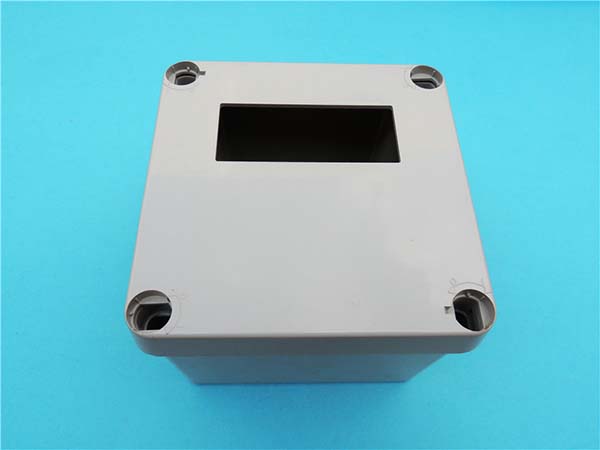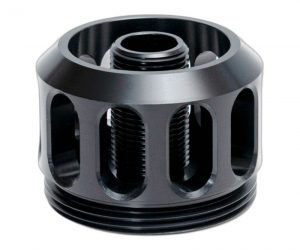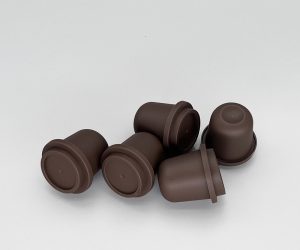1. Introduction: The Precision Revolution of Laser-Based AM
Selective Laser Sintering (SLS) and Selective Laser Melting (SLM) are two revolutionary additive manufacturing (AM) technologies that have been making waves across various industries, from aerospace to healthcare. These technologies utilize high-powered lasers to fuse powdered materials layer by layer, opening up new frontiers in design freedom, material efficiency, and production speed.
In traditional manufacturing, limitations in design and material usage often lead to inefficiencies. For instance, complex geometries may require multiple manufacturing steps or the use of additional materials for support structures. However, SLS e SLM break free from these constraints. By selectively fusing powdered materials only where needed, these technologies enable the creation of intricate designs that were once deemed impossible or too costly to produce.
Moreover, the layer-by-layer construction method allows for precise control over the material distribution, resulting in optimized parts with reduced weight and improved performance. This is particularly crucial in industries such as aerospace, where every gram of weight reduction can lead to significant fuel savings and enhanced operational efficiency.
In the healthcare sector, SLS and SLM have also found unique applications. The ability to create patient-specific implants and prosthetics with complex internal structures tailored to the individual's anatomy has revolutionized medical treatment. These custom-made devices offer better fit, improved functionality, and enhanced patient comfort.
As Yigu Technology delve deeper into the capabilities of SLS and SLM, it becomes evident that these technologies are not just incremental improvements but a fundamental shift in the way we approach manufacturing. They are enabling a new era of precision engineering and sustainable production, driving innovation across multiple industries and setting the stage for a future where manufacturing is limited only by our imagination.
2. Technical Foundations of SLS and SLM
2.1 Core Mechanisms and Materials
At the heart of SLS and SLM lie distinct yet complementary mechanisms that enable their remarkable capabilities in additive manufacturing.
Selective Laser Sintering (SLS) operates by using a high - power laser to sinter powdered materials. This process involves heating the powder particles to a temperature just below their melting point, causing them to bond together through a process called sintering. The most commonly used materials in SLS are polymers and composites. For Yigu Technology example, PA12, a type of polyamide, is widely employed due to its excellent mechanical properties, chemical resistance, and good surface finish after processing. It has a tensile strength in the range of 60 - 80 MPa, making it suitable for a variety of applications such as functional prototypes, end - use parts in the automotive and consumer goods industries. Another notable material is PEEK (Polyether - ether - ketone), which offers high - temperature resistance, outstanding mechanical strength, and biocompatibility. PEEK is often used in aerospace and medical applications where its unique properties are crucial. Carbon - fiber composites are also popular in SLS. By incorporating carbon fibers into the polymer matrix, the resulting composite exhibits enhanced strength and stiffness. These materials can achieve a tensile strength well above that of pure polymers, often reaching values that can meet the demands of high - performance applications.
Selective Laser Melting (SLM), on the other hand, fully melts the metal powder layer by layer using a high - energy laser beam. This results in a fully dense metal part with a density of up to 99%. Common materials used in SLM include Ti - 6Al - 4V, a titanium alloy widely used in aerospace and medical applications due to its high strength - to - weight ratio, corrosion resistance, and biocompatibility. Inconel, a family of nickel - based superalloys, is another popular choice. Inconel alloys offer excellent high - temperature strength, corrosion resistance, and oxidation resistance, making them ideal for applications in the aerospace, energy, and chemical industries. The ability of SLM to create complex geometries with a precision of ±0.05mm allows for the production of highly intricate components that can withstand extreme operating conditions.
2.2 Process Parameters and Performance
The performance of SLS and SLM is significantly influenced by a set of process parameters, each of which plays a crucial role in determining the quality, accuracy, and efficiency of the final product.
| Parameter | SLS | SLM |
| Material Type | Polymers, Composites | Metals, Alloys |
| Layer Thickness | 50–150μm | 20–50μm |
| Surface Finish (Ra) | 10–20μm | 5–15μm |
| Build Speed | 10–20 mm/h | 5–15 mm/h |
| Post - Processing | Minimal | Lavorazione CNC Required |
Material type is a fundamental parameter that dictates the overall characteristics of the printed part. As mentioned earlier, Yigu Technology SLS is primarily used with polymers and composites, while SLM is designed for metals and alloys. The choice of material not only affects the mechanical properties of the part but also its chemical resistance, thermal stability, and biocompatibility.
Layer thickness is another critical parameter. In SLS, the layer thickness typically ranges from 50 - 150μm. A thicker layer can increase the build speed but may sacrifice some accuracy and surface finish. In SLM, the layer thickness is generally thinner, in the range of 20 - 50μm. This thinner layer thickness allows for greater precision in creating complex geometries, especially in metal parts where small features and fine details are often required.
Surface finish is an important consideration for both SLS and SLM. In SLS, the surface finish (Ra) is typically in the range of 10 - 20μm. While this may be sufficient for some applications, post - processing such as sanding or polishing may be required for parts that demand a smoother surface. In SLM, the surface finish is generally better, with an Ra of 5 - 15μm. However, due to the nature of the melting process, some surface roughness is still inevitable, and additional machining operations are often necessary to achieve the desired surface quality.
Build speed is an aspect where SLS has an advantage over SLM. SLS can achieve build speeds of 10 - 20 mm/h, which is relatively faster compared to SLM's 5 - 15 mm/h. This difference in build speed is mainly due to the lower energy requirements in sintering compared to melting. However, it's important to note that build speed can also be influenced by other factors such as part complexity and the size of the build area.
Post - processing requirements also differ between SLS and SLM. SLS often requires minimal post - processing, as the sintered parts can be used directly in many cases. In contrast, SLM - printed metal parts usually require CNC machining. This is because the melted metal layers may have some surface irregularities, and machining is necessary to achieve the final dimensions and surface finish required for high - precision applications.
3. Breakthrough Applications in Key Industries
3.1 Aerospace Component Production
The aerospace industry has been one of the early adopters and major beneficiaries of SLS and SLM technologies. The need for lightweight yet high - strength components in aircraft and spacecraft has driven the exploration and implementation of these additive manufacturing techniques.
One of the most significant applications of SLM in aerospace is the production of turbine blades. Airbus, for Yigu Technology instance, has successfully utilized SLM to manufacture turbine blades. By using SLM, they have managed to reduce the weight of these blades by a remarkable 30%. This weight reduction is crucial as it directly contributes to improved fuel efficiency and enhanced performance of the aircraft engines. At the same time, Airbus has been able to maintain a dimensional accuracy of 0.01mm, ensuring that the blades fit perfectly into the engine assembly and function optimally under extreme conditions.
SLS has also made its mark in the aerospace industry, particularly in the production of lightweight brackets. Commercial aircraft use numerous brackets to support various components. SLS - printed lightweight brackets have enabled a reduction in fuel consumption by approximately 15%. This is because these brackets are designed with optimized geometries that minimize weight while maintaining the necessary structural integrity. The ability to create complex lattice structures through SLS allows for the distribution of stress in a more efficient manner, reducing the overall material usage without sacrificing strength.
Moreover, the lead time for producing these components has been significantly reduced. Traditional manufacturing methods for aerospace components often involve multiple machining steps, complex tooling, and long production cycles. With SLS and SLM, the design - to - production time can be cut down by weeks or even months. This not only accelerates the development of new aircraft models but also enables quicker response times for replacing damaged components, improving the overall operational efficiency of the aerospace industry.
3.2 Medical Device Fabrication
In the medical field, Yigu Technology SLS and SLM have opened up new possibilities for the creation of customized medical devices, particularly in the area of orthopedic implants.
SLM is being increasingly used to produce custom orthopedic implants. These implants are designed based on patient - specific CT scans, allowing for a perfect fit to the patient's anatomy. One of the key advantages of SLM - printed implants is their porous structures. These porous structures are designed to mimic the natural bone structure, promoting osseointegration, which is the process by which the implant fuses with the surrounding bone tissue. Studies have shown that these SLM - printed implants exhibit a 40% higher osseointegration rate compared to traditional implants. This means that patients with SLM - printed implants experience faster recovery times and a reduced risk of implant failure.
A 2024 study reported an astonishing 95% patient satisfaction with SLM - printed titanium knee replacements. The high satisfaction rate can be attributed to the customized nature of these implants. They are tailored to the individual patient's knee anatomy, providing better joint function, reduced pain, and improved mobility. The use of titanium in SLM - printed implants is also advantageous due to its biocompatibility, corrosion resistance, and high strength - to - weight ratio. Titanium ensures that the implant can withstand the mechanical stresses exerted on the knee joint during daily activities while being well - tolerated by the patient's body.
SLS, on the other hand, has found applications in the production of medical models and surgical guides. These models are used by surgeons for pre - surgical planning. By creating accurate 3D models of the patient's anatomy using SLS, surgeons can better understand the complexity of the surgical procedure, practice the operation, and plan the placement of implants more precisely. Surgical guides produced by SLS also help in the accurate positioning of instruments during surgery, reducing the margin of error and improving the overall success rate of the operation.
3.3 Automotive Prototyping
The automotive industry has embraced Yigu Technology SLS and SLM for their ability to accelerate the prototyping process and improve the performance of vehicle components.
Ford has been at the forefront of using SLS in electric vehicle (EV) battery housing development. In the past, the prototyping of battery housings using traditional methods took a significant amount of time, typically around 8 weeks. However, by adopting SLS, Ford has managed to reduce this prototyping time to a mere 3 days. This dramatic reduction in time allows for faster iterations of the design, enabling engineers to test and optimize the battery housing design more quickly. As a result, Ford can bring new EV models to market faster, staying competitive in the rapidly evolving automotive industry.
SLM has also been instrumental in improving the performance of engine parts in automobiles. One of the key applications is the creation of conformal cooling channels in engine parts. Conformal cooling channels are designed to follow the complex shape of the engine part, providing more efficient cooling compared to traditional straight - line cooling channels. Through SLM, these conformal cooling channels can be precisely manufactured within the engine parts. This has led to an improvement in thermal efficiency by 25%. A more thermally efficient engine means better fuel economy, reduced emissions, and increased engine lifespan.
Furthermore, the use of SLS and SLM in automotive prototyping allows for the production of complex geometries that were previously difficult or impossible to achieve with traditional manufacturing methods. This design freedom enables automotive engineers to create more aerodynamic components, reduce the weight of the vehicle, and improve overall performance. For example, lightweight, complex - shaped brackets and components can be printed using SLS, reducing the vehicle's weight and contributing to better fuel efficiency.
FAQ
Q1: What are the main differences between SLS and SLM in terms of material processing and part properties?
A: SLS sinters powders (partial melting) for polymers/composites, while SLM fully melts metals for high-strength parts. SLM offers higher density but requires more post-processing.
Q2: Can SLS and SLM be used for large - scale production?
A: Yes. Industrial systems like EOS M 400 - 4 support build volumes up to 400x400x400mm, enabling batch production of aerospace and automotive components.
Q3: Which industries benefit the most from SLS and SLM?
A: Aerospace, medical, and automotive sectors gain significant advantages due to lightweighting, customization, and rapid prototyping capabilities.



